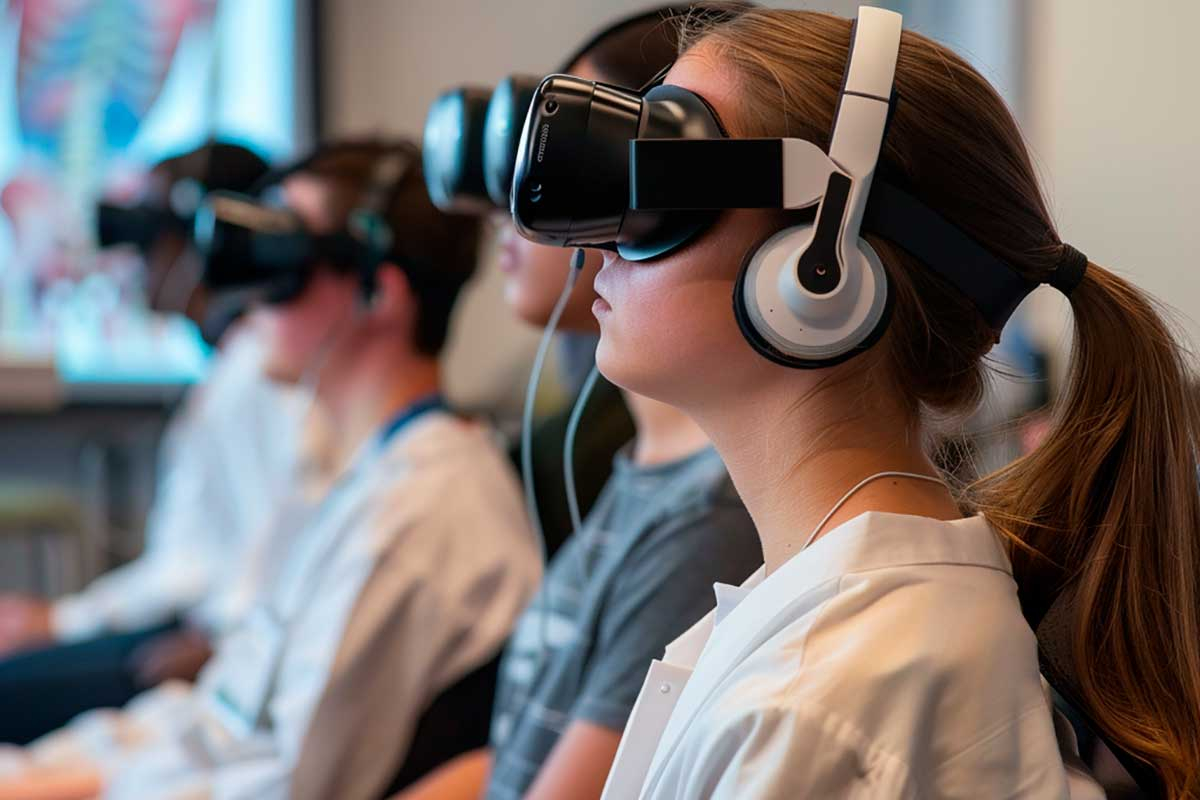Augmented Reality in Medical Education: Interactive Simulations and Procedure Training
Augmented Reality (AR) is revolutionizing medical education by providing interactive simulations and practical training for complex procedures. This cutting-edge technology enhances learning experiences and improves skills acquisition for medical students and professionals. Clinic Consultation is at the forefront of integrating AR into medical training, offering innovative solutions that bridge the gap between theoretical knowledge and practical application. This article explores the applications and benefits of AR in medical education.
The Role of Augmented Reality in Medical Education
Introduction to Augmented Reality
Augmented Reality overlays digital information onto the real world, creating a blended environment where virtual and physical elements coexist. In medical education, AR can project 3D models of anatomical structures, simulate surgical procedures, and provide interactive training modules. This immersive learning approach enhances comprehension and retention of complex medical concepts.
Clinic Consultation uses AR to offer advanced educational tools that support the training of medical students and professionals. By integrating AR into their curriculum, they provide a more dynamic and engaging learning experience that prepares learners for real-world medical challenges.
Enhancing Anatomy Learning with AR
Understanding human anatomy is fundamental for medical students, and AR provides an innovative way to study this intricate subject. AR applications can project 3D models of the human body, allowing students to explore anatomical structures in detail. These models can be manipulated, rotated, and viewed from different angles, offering a comprehensive understanding of spatial relationships between organs and tissues.
For example, students can use AR to visualize the layers of the human heart, observe blood flow, and examine the functions of each chamber. This interactive approach makes learning more engaging and effective compared to traditional textbooks and diagrams.
Interactive Simulations and Procedure Training
Simulating Surgical Procedures
One of the most significant applications of AR in medical education is the simulation of surgical procedures. AR allows students and trainees to practice complex surgeries in a risk-free environment. By overlaying digital images onto a physical dummy or a simulated patient, learners can perform virtual surgeries with real-time guidance and feedback.
These simulations enhance hand-eye coordination, precision, and decision-making skills. For instance, AR can guide a trainee through a laparoscopic surgery, highlighting critical structures and providing step-by-step instructions. This hands-on practice is invaluable for building confidence and competence before performing actual surgeries on patients.
Training for Emergency Situations
AR is also instrumental in training for emergency situations. Simulating scenarios like cardiac arrests, trauma cases, and resuscitations in an AR environment prepares medical professionals to respond effectively under pressure. These realistic simulations help learners develop quick-thinking abilities and refine their procedural skills.
Clinic Consultation incorporates AR-based emergency training modules to ensure that healthcare providers are well-prepared for real-life emergencies. By practicing in a controlled yet realistic setting, trainees can improve their response times and outcomes in critical situations.
Benefits of AR in Medical Education
Enhanced Learning and Retention
The interactive nature of AR fosters active learning, which has been shown to improve retention and understanding of complex subjects. By engaging multiple senses, AR helps learners retain information longer and apply it more effectively in clinical settings. The ability to visualize and interact with 3D models makes learning more intuitive and memorable.
Safe and Controlled Learning Environment
AR provides a safe and controlled environment for practicing medical procedures. Trainees can make mistakes and learn from them without risking patient safety. This aspect is particularly beneficial for mastering high-stakes procedures where real-world practice opportunities are limited.
Cost-Effective Training Solution
Implementing AR in medical training can be more cost-effective than traditional methods. Physical models and cadavers are expensive and limited in availability, while AR applications can be reused and updated easily. This scalability makes AR an accessible training tool for institutions with varying budgets.
Challenges and Future Directions
Technical Limitations and Accessibility
Despite its benefits, AR technology faces challenges such as high development costs, technical limitations, and accessibility issues. Ensuring that AR applications are user-friendly and widely available is crucial for their successful integration into medical education. Continuous advancements in technology and reduced costs over time are expected to address these challenges.
Integration with Existing Curriculum
Integrating AR into existing medical curricula requires careful planning and collaboration between educators and technology developers. It is essential to align AR modules with learning objectives and ensure that they complement traditional teaching methods. Proper training for instructors is also necessary to maximize the effectiveness of AR tools.
Future Innovations
The future of AR in medical education is promising, with potential innovations such as AI integration, enhanced haptic feedback, and more sophisticated simulations on the horizon. These advancements will further improve the realism and educational value of AR applications, making them indispensable tools in medical training.
Clinic Consultation is committed to staying at the forefront of AR technology, continuously exploring new ways to enhance their educational offerings. By adopting cutting-edge AR solutions, they aim to provide the best possible training experiences for medical students and professionals.
Conclusion
Augmented Reality is transforming medical education by providing interactive simulations and practical training for complex procedures. Companies like Clinic Consultation are leading the way in integrating AR into their training programs, offering dynamic and effective learning solutions. As AR technology continues to evolve, its impact on medical education will only grow, paving the way for more skilled and confident healthcare professionals.
